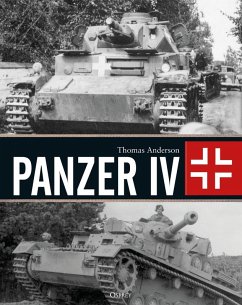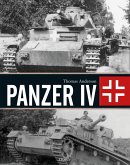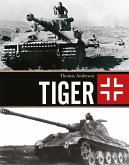This highly illustrated title details the history of the Panzer IV throughout World War II, where it saw service on the front line from Poland in 1939 through to the very last days of the Third Reich in Berlin in 1945.
The Panzer IV programme was started in 1934, forming, alongside the Panzer IIs and IIIs, the schnellen Truppen, the force that was to become the Panzerwaffe. At first, German planners envisioned the tank in a secondary role, but during the invasions of The Low Countries and France, it took on a more central role.
When the Panzerwaffe turned east to attack the Soviet Union, the Panzer IV initially fared poorly against the better-armed T-34. However, upgrades to its gun and armour protection saw it perform far better, not only against Soviet armour but also against British and American tanks in North Africa and Italy.
In 1944, it was slowly replaced by the Panzer V Panther, but the dire strategic situation meant that it bore the brunt of the Allied D-Day invasion and its aftermath, and it remained in service until the end of the war.
Fully illustrated throughout with contemporary photographs, this fascinating study from German armour expert Thomas Anderson tells the complete story of Germany's most widely produced tank of World War II, from its design and development to its many upgrades and variants.
The Panzer IV programme was started in 1934, forming, alongside the Panzer IIs and IIIs, the schnellen Truppen, the force that was to become the Panzerwaffe. At first, German planners envisioned the tank in a secondary role, but during the invasions of The Low Countries and France, it took on a more central role.
When the Panzerwaffe turned east to attack the Soviet Union, the Panzer IV initially fared poorly against the better-armed T-34. However, upgrades to its gun and armour protection saw it perform far better, not only against Soviet armour but also against British and American tanks in North Africa and Italy.
In 1944, it was slowly replaced by the Panzer V Panther, but the dire strategic situation meant that it bore the brunt of the Allied D-Day invasion and its aftermath, and it remained in service until the end of the war.
Fully illustrated throughout with contemporary photographs, this fascinating study from German armour expert Thomas Anderson tells the complete story of Germany's most widely produced tank of World War II, from its design and development to its many upgrades and variants.









